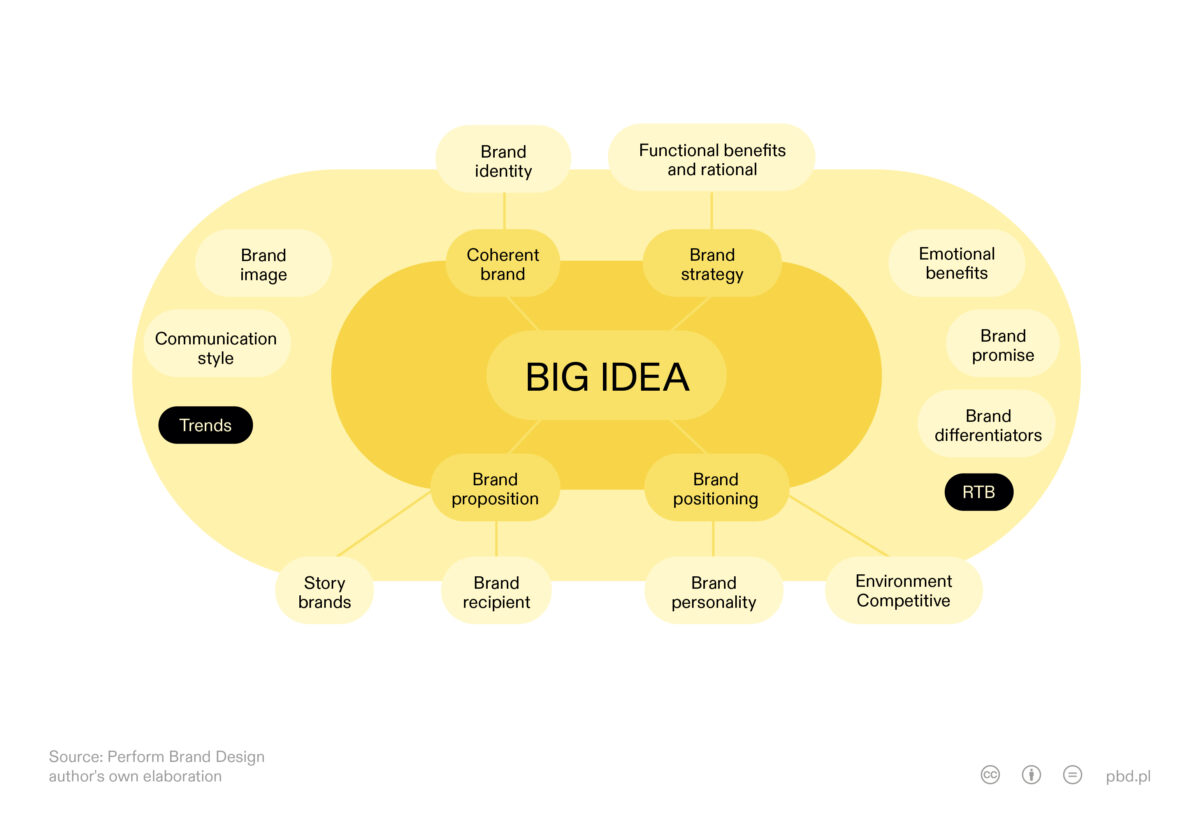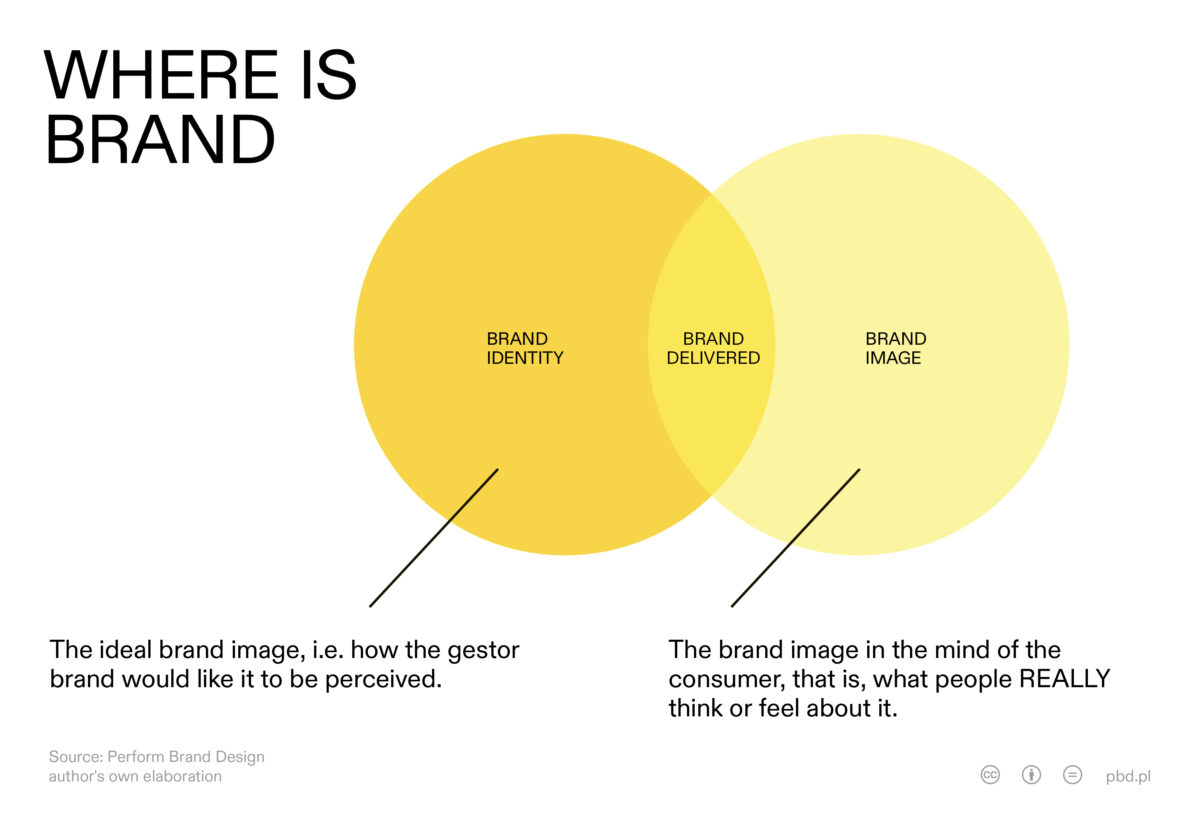A brand can be on-trend, but trends will never be brands.
A great Brand Idea (Big Idea) usually acts as the core from which an organisation’s strategy, marketing and communications activities emerge. It is a simple, short and to the point phrase that acts as a guide to where we are actually heading. It can be likened to a well-tailored sail that lifts the brand above the competition. However, in order for the sail to carry us in the direction we want to go, it has to react to its surroundings. In the same way, a brand is subject to the tests of time. How can we take advantage of trends to give our sails a wind, but not turn the brand upside down?
Big Idea is a kind of filter in business decision-making, helping to determine whether an activity leads us to our goal and strengthens the brand, or brings us to shoals and gives contradictory messages. Increasingly, we are witnessing a situation where a brand idea fits into a trend. For example, cosmetic brands want to be natural because they contain minimal or zero synthetic ingredients, ethical – not tested on animals, or organic – where both the product is more environmentally friendly and its packaging is made from recycled or environmentally recognised materials. Can a trend that is just emerging or one that is present in the mainstream market become a positioning idea for our brand? Is it possible for a trend to replace one of the foundations of a strong brand – its strategy?
Nature of the brand
Let’s examine this with the example of the naturalness trend, i.e. slow changes in the values we hold, including the growing importance of simplicity or saving time. According to forecasts by Euromonitor International, this trend is set to influence consumer behaviour until 2030. To begin with, let’s ask ourselves: what does environmental awareness actually mean for us, what does caring for a healthy lifestyle mean for me, what is my individual minimal living or zero/less waste? How are these trends present in our lives and how do they translate into our everyday purchasing choices?
Do specific brands come to mind? Or one, undeniably, most strongly associated with the concepts mentioned? There will probably be as many answers as there are interviewees. However, one thing is certain – trends and brand positioning permeate each other.
The trend towards organic and natural products has been on the market for many years. This is due to the fact that these are general ideas that encompass many motivations and can translate into a wide variety of behaviour for our customers.
Let’s stop for a moment at products in the category of organic intimate hygiene products for women. We already have many players in this category, available in drugstores or online. We have both distinctive and transparent brands (YourKaya), large international brands present in the market for decades, proposing new lines under the big brand umbrella (e.g. Always Organic Cotton). In this case, the organic nature of cotton is more a means to a certain end, such as less chemicals in my life or the feeling that I am consciously not adding litter to our planet, rather than a brand positioning in itself. Many players have already signed up to this trend, and their numbers are growing dramatically.
Meanwhile, female consumers are presumably not much more than a year ago. Therefore, arguably, a trend in itself should not be a brand idea – we will not build a separate, unique category on it. Today, strong brands, represented by big players or so-called ‘salient’ brands – i.e. distinctive, unique, timeless, building the strongest and most unique relationship with consumers – are winning.
Measure of a strong brand
A great brand idea should be stable and resistant to changing trends. Of course, when we see some emerging trend value that has the potential to revolutionise our industry, we cannot be indifferent. We should consider whether and how we can translate it into our brand strategy and communication. It is worth distinguishing rationally between a trend and a Great Idea, and conducting strategic analyses in our brand area.

A strong Big Idea signals the company’s culture without being too veiled. It should be displayed in such a way that it truly represents value in the eyes of the customer. After all, its purpose is to translate into consumer choices. The Big Idea should epitomise through consistent brand graphic concepts, a key message or even the voice and tone of the voiceover in the ad. If the Big Idea fits indirectly into developing trends – it is worth using this in the brand’s day-to-day communication, in a way that is tailored to its core.
A coherent future
Big Idea is the link between the present and the future. How they see us today is linked to how they should see us some time from now. This must coincide, at least in part, with the brand image operating in the minds of consumers. For the ‘brand to be’ (brand delivered), we need to ensure that our brand reaches buyers and consistently communicates who we really are. This is not easy due to the fact that there is a lot of competition for other ‘target group’ content.

The brand image is also influenced by the experience of the product itself, the purchase process and after-sales service. Recommendations and other people’s opinions play a not insignificant role. The consumer simultaneously perceives many messages, including those of competing brands. Therefore, in order to be noticed in the mass of information, it is worth ensuring that the idea of the brand, our great idea, fits above all into the BOTH worlds of the target consumer. We therefore need to get to know our potential buyer and find out what their life is like and how their consumer choices are influenced by both momentary and long-term trends. It is worth factoring this into the company’s marketing efforts, while preserving what the brand has built – its brand salience.
It is worth asking yourself the following questions from time to time:
- Do I know how to lead the brand in a consistent but not boring way?
- What trends, fashions, trends do I observe in my industry, in my competitive environment and in my customers’ area of interest?
- How can I use the changes taking place to benefit my business?
- Doesn’t the new communication, the on-trend communication, violate the principles of my brand strategy (its archetype, values, personality)?
- Is my current positioning keeping up with the development of modern thought, or is it worth thinking about repositioning?
- Do I have a clear brand strategy and does everyone in the organisation understand it? If they do not know it, how can they familiarise themselves with it?
Leading a brand requires a good captain who sees trends on the horizon and resists unfavourable gusts of wind. Sometimes, however, even a great commander gets so wrapped up in the sights that he or she stops seeing nuances and opportunities for growth. That is why it is worthwhile for someone to climb into the stork’s nest and report from a higher level. I invite you to review the brand strategy together, discuss the trends present in the mainstream, as well as a visual audit to identify possible areas for refreshment in the brand.